The Big 12 enters 2019 toeing a line between order and chaos. On one hand, Oklahoma, one of the conference's two blue bloods, has won the past four conference titles and is favored to do the same in 2019. (FPI gives it a 70 percent chance, which is pretty insane for July.) The other conference blue blood, Texas, was the only Big 12 team to defeat the Sooners last year and faced OU in the conference title game to boot. And hey, guess who's favored to reach the title game again this year ...
At the same time, though, Iowa State, without a conference title since 1912 and 3-9 just three years ago, was picked third in the preseason Big 12 media poll. Baylor, 1-11 in 2017, is a projected favorite in nine games, per S&P+ and FPI, and gets Oklahoma and Texas at home. We could very well get the same old, same old from this conference in 2019 -- but it would take only an upset or two for things to get weirder than jelly on a sausage biscuit.
A quick reminder on terminology: S&P+ is the tempo- and opponent-adjusted efficiency measure I created at Football Outsiders in 2008.
Teams are listed below in order of S&P+ projections.
Jump to a team:
Oklahoma | Oklahoma State | TCU | Texas | West Virginia
Baylor | Iowa State | Texas Tech | Kansas State | Kansas
Oklahoma Sooners

2018 record and rankings: 12-1 (No. 4 in S&P+, No. 5 in FPI)
2019 S&P+ projection: 10.5 wins (No. 5)
2019 FPI projection: 10.9 wins (No. 6)
A coaching change is an opportunity for an immediate reversal of fortune. When Bob Stoops unexpectedly retired in June 2017, Oklahoma was hoping for the opposite. So far, so good.
This has been OU's smoothest coaching change since Chuck Fairbanks left for the NFL and handed the reins to OC Barry Switzer. Head coach Lincoln Riley rode Baker Mayfield to the College Football Playoff in Year 1, lost Mayfield as the No. 1 pick in the NFL draft in 2018, replaced him with Kyler Murray, made another CFP appearance, and produced another No. 1 pick a few months later.
The Sooners have ranked first in offensive S&P+ for three straight years and have won the Big 12 title in all four years Riley has been in Norman. Not bad for a coach who has thus far figured things out on only one side of the ball.
OU had enjoyed a top-15 defensive S&P+ ranking in seven of the past eight seasons before Clemson plucked defensive coordinator Brent Venables away from Norman. The Sooners had fallen to an average ranking of 25.2 in Stoops' last five years, all with his brother Mike as defensive coordinator, then dropped to 43rd in 2017.
(Their total defense rankings were much worse than this, but once you adjust for opponent, tempo, etc., a defense in the offense-happy Big 12 is probably going to look a little better.)
On the heels of a 48-45 loss to Texas last fall, OU was 54th in defensive S&P+, and Riley finally fired Mike Stoops. He replaced him with Ruffin McNeill, his former boss at ECU and former Texas Tech defensive coordinator under Mike Leach, but McNeill provided only about a two-week bounce. OU gave up 47 points per game in its final four regular-season contests -- yet somehow won all four! -- then gave up 27 points to Texas in the Big 12 title game and 45 to Alabama in the CFP. OU finished the year 84th in defensive S&P+, its worst such ranking in 22 years and third-worst ever.
Riley's first independent coordinator hire was another former Leach DC: Alex Grinch, who crafted a fun Washington State defense before spending 2018 as Greg Schiano's co-coordinator at Ohio State. He's known as a creative force and tinkerer, and he'll inherit what is, at the very least, a more experienced Sooners defense. Of the 19 players to make at least nine tackles last year, 10 were freshmen or sophomores, including six of eight in a stressed-out secondary.
Corners Tre Brown and Parnell Motley did combine for 7.5 tackles for loss and 26 passes defensed last year, even though they got as well as they gave at times. Junior linebacker Kenneth Murray (12.5 TFLs, 4.5 sacks) and sophomore end Ronnie Perkins (8 TFLs, 5 sacks) each have playmaking ability, and lord knows Riley has recruited quite a few blue-chippers on D over the past couple of years. But as much as anything, Grinch has some serious morale-building to do here.
There's enough turnover on offense that it would be a worry with a less-proven coach. Murray is gone after a 4,000/1,000 season (remember when we were impressed with a QB throwing for 2,000 yards while rushing for 1,000?), and those responsible for 58 of last year's 70 offensive line starts are gone, too, including two All-Americans.
Alabama transfer Jalen Hurts takes over for Murray, and although he's got some automaton tendencies to work through, he's an efficient runner and passer, and his supporting cast in the skill corps -- pass-catchers CeeDee Lamb, Grant Calcaterra, Lee Morris, Charleston Rambo et al. and backs Trey Sermon, Kennedy Brooks and T.J. Pledger -- is just about as good as ever.
OU remains the Big 12 favorite for a reason, but if the offense slips at all from its No. 1 perch, the defense will have to pick up the slack. Can it?
Oklahoma State Cowboys
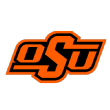
2018 record and rankings: 7-6 (No. 22 S&P+, No. 30 FPI)
2019 S&P+ projection: 8.2 wins (No. 22)
2019 FPI projection: 7.3 wins (No. 37)
This past June, Oklahoma State head coach Mike Gundy told The Oklahoman's Berry Tramel that OSU's disappointing 7-6 campaign in 2018 "energized me, because I failed to get our team to play at the highest level last year. We were a very undisciplined football team, and we were not a very tough football team. And those two things fall on the head coach."
He's half-right, anyway. OSU was indeed a tough football team, but only against certain opponents.
OSU went 4-1 against teams that finished in the S&P+ top 35 in 2018. The Cowboys destroyed Boise State early in the season, beat Texas and West Virginia, and came within a failed two-point conversion of winning in Norman. In the Liberty Bowl, they were outgained by 135 yards against Missouri, but they rode a third-quarter burst and a late fourth-down stop to a 38-33 win.
The win over Missouri, however, was a necessity for clinching a winning record because against teams outside of the S&P+ top 35, the Pokes went an appalling 3-5.
They lost at home to Texas Tech (by 24!) and Iowa State. They laid a big, fat egg at Kansas State. They lost in the final minute at Baylor. They gave up 31 points to maybe the worst TCU offense of the Gary Patterson era and lost by seven.
That's not the way that's supposed to work. But while the down moments were obviously discouraging, the upside the Pokes showed during a transition year had to still be a little bit heartening. OSU lost the insane passing combination of quarterback Mason Rudolph and receivers James Washington and Marcell Ateman, plus two all-conference offensive linemen, their best pass-rusher, and both starting safeties. Plus, aggressive new defensive coordinator Jim Knowles installed his attack in a year in which five of OSU's top 10 tacklers were freshmen and sophomores.
If the Cowboys have a quarterback, the rest of the roster could be ready for something far more consistent in 2019. All-American receiver Tylan Wallace returns after catching 86 passes for 1,481 yards, and slot men Dillon Stoner and Landon Wolf are back as well. Chuba Hubbard took over as the go-to running back late in the year and thrived. He'll be running behind an experienced line, and he proved excellent in the passing game as well.
Defensively, the secondary is less painfully young and could be ready to play the physical role Knowles expects. Amid plenty of glitches, safeties Malcolm Rodriguez, Jarrick Bernard and Kolby Harvell-Peel combined for 14 tackles for loss, and corners Rodarius Williams and A.J. Green combined for 22 passes defensed. There are massive question marks on the defensive front, though. Last year's top five linemen are gone, and the statistical leaders are both transfers: tackles Kyle Junior (Bowling Green) and Israel Antwine (Colorado). Senior Mike Scott has pass-rushing potential, but depth is an obvious, and massive red flag.
The most interesting newcomer is on offense. After losing offensive coordinator Mike Yurcich to Ohio State, Gundy replaced him with the coordinator of Princeton's wonderfully physical and creative offense, Sean Gleeson. It was one of my favorite hires of the offseason.
Gleeson's first starting QB will likely be either redshirt freshman and blue-chipper Spencer Sanders or Hawaii transfer senior Dru Brown. Sanders is a former track athlete with upside and dual-threat ability, but Brown's experience could still win him the job. Whoever starts will likely be prolific, but if the defensive front is as weak as it could be, OSU might need to be something beyond "prolific" to improve on last year's inconsistent output.
The potential is high, though. S&P+ and FPI disagree a bit on the Cowboys -- they are projected 22nd via the former and 39th via the latter -- but the Big 12 schedule features five home games, and the nonconference schedule replaces Boise State with Oregon State (and is therefore awfully cakey).
TCU Horned Frogs
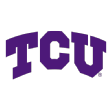
2018 record and rankings: 7-6 (No. 43 S&P+, No. 47 FPI)
2019 S&P+ projection: 7.1 wins (No. 34)
2019 FPI projection: 7.3 wins (No. 35)
It should not surprise you to learn that in the 18 seasons since Gary Patterson took over for Dennis Franchione as TCU head coach, the Horned Frogs have ranked in the top 50 in defensive S&P+ 16 times (they were 17th in 2018) and the defense has graded out better than the offense 15 times. Patterson's vaunted 4-2-5 defense has long been regarded as innovative and unique; as the spread offense has taken hold, many have attempted to copy it.
The offense, however, has been hit or miss.
If you think about it, there are two components to a good offense. First, there is your base attack -- the normal downs and distances, in open areas of the field. This is where your coordinator's offensive philosophy shines through and where a majority of your snaps take place. The other component comes in the specialty moments, the "someone please make a play" moments. They're what happens when you fall behind schedule, or when you start to sniff the goal line.
TCU was definitively solid at the former last year. The Frogs were efficient and avoided awkward downs and distances. Backs Sewo Olonilua and Darius Anderson were steady, and slot receiver Taye Barber was a particularly nice quick-passing option in these situations.
In the specialty moments, however, TCU wasn't just bad, it was awful. On blitz downs (second-and-super-long, third-and-5 or more), the Frogs ranked 125th in success rate and 128th in big-play rate. Inside the opponent's 10, they ranked 125th in success rate. On the goal line, they ranked 80th. They didn't create easy points with many big plays, and when put-up-or-shut-up time came on a given drive, they shut up.
After a prolific start to the season (42.3 points per game through three weeks), the offense quickly ran aground.
Quarterback Shawn Robinson missed the second half of the season with injury, then transferred. Wideout KaVontae Turpin got dismissed from the team. The offensive line cratered under the weight of injury (only one lineman started all 13 games). The result: TCU averaged just 18 points per game over its final 10 contests and needed late-season, skin-of-the-teeth victories over Baylor, Oklahoma State and Kansas State to reach bowl eligibility. And in the postseason, the Frogs played one of the most offensively, uh, offensive bowl games ever, a 10-7 overtime conquest of Cal.
With simple stability, the offense should return to at least a decent level. Robinson's gone, but replacement Mike Collins (a more effective passer but a less effective runner) will have an interesting battle on his hands in attempting to fend off mobile Kansas State transfer Alex Delton, one or two blue-chip redshirt freshmen -- Justin Rogers and, if eligible, Ohio State transfer Matthew Baldwin -- and incoming blue-chipper Max Duggan.
The skill corps returns Olonilua and Anderson in the backfield, plus Barber and explosive Jalen Reagor out wide. The offensive line, which returns six of the eight players who started at least four games, will improve simply by keeping the same five guys on the field from week to week.
Patterson's track record suggests TCU will be just fine defensively, but there are some serious playmakers to replace in the front six. Departed ends Ben Banogu and L.J. Collier combined for 29.5 tackles for loss and 14.5 sacks, and the leading returnee at the position is redshirt freshman Ochaun Mathis, who recorded 2.5 tackles. At linebacker, junior Garret Wallow is the only returnee among the five players who saw action. The LB meeting room will be dominated by freshmen and redshirt freshmen.
The secondary, however, is typically the most important part of Patterson's defense, and it's all sorts of experienced. Seniors Jeff Gladney, Vernon Scott, Julius Lewis and Innis Gaines (who made 6.5 TFLs and defensed seven passes in just six games) are all back. They should be able to mask the occasional breakdown up front.
Texas Longhorns

2018 record and rankings: 10-4 (No. 32 S&P+, No. 19 FPI)
2019 S&P+ projection: 6.7 wins (No. 35)
2019 FPI projection: 7.7 wins (No. 24)
During Mack Brown's heyday as Texas' head coach, his Longhorns were just about the most consistent entity in college football. They were an outright fixture in the AP top 15 -- 11th or better in the preseason for 11 straight years, 13th or better at the end for 10 straight, and winners of at least 10 games every year from 2001 to 2009.
Beginning in 2010, however, Brown burned out and lost his grip on greatness, and the UT football program has battled frustration ever since. Since losing 2009's BCS Championship game to Alabama, Texas has begun two seasons in the top 15 and finished both of them unranked (2010, 2013). In Tom Herman's first season in charge (2017), they again began inside the top 25 and finished outside of it.
Then came the 2018 season, however. Texas began the year 23rd, as in 2017, but rose as high as sixth and, for the first time since 2009, finished in the top 10. The Horns beat five opponents that were ranked at the time of the game and beat two opponents that were in the top 10 (Oklahoma and Georgia).
Using a wide-angle lens, this all feels right. It feels like it is truly time to proclaim Texas all the way back, right?
Maybe. But only if Herman learns to actually coach like a favorite.
Herman is the ultimate big-game coach. In four years as a head coach, he is 10-6 straight-up as an underdog and 13-2-1 against the spread. As a one-possession favorite, he's 9-2 straight-up and 7-3-1 against the spread. As a healthy favorite, however? He's 21-5 straight-up (a worse win percentage than as a one-score favorite) and 8-17-1 against the spread. Title teams don't play like title teams only three or four times a year.
The wins over Oklahoma and Georgia were statements, to be sure, but Texas played five teams that finished 59th or worse in S&P+ last year and looked mediocre at best against all five. The Horns lost to Maryland (No. 59) and beat Tulsa (No. 107) by seven, Kansas State (No. 78) by five, Baylor (No. 67) by six and Kansas (No. 100) by seven. They also lost to Oklahoma State for the fourth straight year and were lucky to avoid losing to Texas Tech for the second straight (they were outgained by 126 yards).
As he proved in his first year at Houston too, Herman tries to keep as many cards as possible close to his vest for as long as possible. His best efficiency weapon is quarterback Sam Ehlinger's running ability, but he doesn't want Ehlinger taking 20 hits per game, so he fully unleashes the 235-pounder only in big games. His line and actual running backs have yet to develop any consistency, and last year's No. 1 receiver, Lil'Jordan Humphrey, is gone.
Herman still coaches like an underdog at one of the most resource-heavy programs in the country. The Longhorns therefore open themselves up to more potential upsets than a lot of the other teams around them in the preseason polls. But if they can generate more week-to-week consistency, there's obviously a lot to like here. Ehlinger is back to lead the offense, and he's got senior wideouts Collin Johnson and Devin Duvernay and two all-conference linemen (center Zach Shackelford and Georgia Tech transfer Parker Braun) at his disposal. And although the run game wasn't efficient enough outside of Ehlinger, sophomore Keaontay Ingram was the most efficient back, at least.
Defensive coordinator Todd Orlando will be quickly relying on the fruits of recent recruiting classes, as the Horns are without last year's top three tacklers on the line, top two at linebacker, and three of five in the secondary. That level of turnover almost always comes with a statistical drop-off -- another reason to wonder whether expectations are growing too high, too quickly -- but the upside is obvious, especially in the back.
West Virginia Mountaineers

2018 record and rankings: 8-4 (No. 24 S&P+, No. 15 FPI)
2019 S&P+ projection: 6.5 wins (No. 38)
2019 FPI projection: 4.6 wins (No. 58)
If you have to engage in a coaching search, it's generally good to be the first one in line. Each season produces a certain set of hot coaching names, and you want to be positioned well to nab one of them.
This wasn't a particularly normal coaching carousel, however. The biggest program on the hiring list, Ohio State, simply promoted from within in replacing Urban Meyer with Ryan Day, and two other power conference programs (North Carolina and Kansas) hired inactive former champions (Mack Brown and Les Miles, respectively) instead of the usual hot up-and-comers. With bowl season already in full swing, Neal Brown was somehow still at Troy.
This was baffling. Brown had five years of experience as a power conference assistant at Texas Tech and Kentucky, and his four years in Troy had been incredible.
The Trojans had won just 17 games in the four seasons before Brown came to town. But after a first-year reset, they not only broke through but remained broken through. They went 31-8 in his final three seasons, ranking 65th or better in S&P+ all three years and scoring marquee wins against LSU in 2017 and Nebraska in 2018. He dealt with massive turnover on both sides of the ball at times and kept winning.
Another Power 5 job, however, would come open. Dana Holgorsen left West Virginia for Houston on New Year's Day, and the Big 12's eastern outpost had scooped Brown up within four days. WVU gave other schools a month's head start, then swooped in and made the no-brainer hire of the year.
Holgorsen's Mountaineers were consistently solid and regularly fun, but they never enjoyed the breakthrough season it always appeared they were capable of. They spent parts of three seasons in the top 10 but never finished higher than 17th. Holgorsen made it through only one of his last seven seasons without at least a three-game losing streak.
The bar is high but clearable for Brown, but there are plenty of first-year challenges. For one thing, the schedule is loaded with toss-ups -- S&P+ projects eight of 12 games with a scoring margin of six or fewer points. For another, there's churn on the offensive two-deep.
Brown's first season will unfold without quarterback Will Grier, all-conference left tackle Yodny Cajuste and four of last year's top five receivers. Transfers might patch the wounds at QB -- Oklahoma's Austin Kendall and, if eligible, Bowling Green's Jarret Doege will battle 2018 backup Jack Allison for the starting job -- but 2019 will see a lot of players in a lot of new roles playing for new coaches.
The Mountaineers do boast an excellent running back trio of Kennedy McCoy, Martell Pettaway and Leddie Brown (combined: 1,871 yards, 5.6 per carry), but we'll see what role they find in Brown's pass-first attack.
Brown's Air Raid genealogy belied the fact that his defense was better than his offense each year at Troy. Thanks in part to resurgent work from veteran defensive coordinator Vic Koenning, the Trojans ranked in the defensive S&P+ top 50 each year 2016-18. Brown brought Koenning with him to Morgantown.
Koenning's 2018 defense was massively disruptive: 11th in havoc rate, 13th in stuff rate, 14th in sack rate. He should have quite a bit of fun coaching one of the most dynamic, active secondaries in the Big 12. Safety Jovanni Stewart and corners Josh Norwood and Keith Washington Jr. combined for 17 tackles for loss, 5.5 sacks, 3 interceptions and 20 pass breakups, and they're all back.
Granted, the secondary gets to play a major role only if opponents have to pass. WVU's run defense was massively inefficient, and now three of last year's top four linemen are gone. The linebacking corps does feature solid pieces in senior Shea Campbell, junior Dylan Tonkery and Alabama transfer VanDarius Cowan, at least.
Baylor Bears
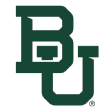
2018 record and rankings: 7-6 (No. 67 in S&P+, No. 61 in FPI)
2019 S&P+ projection: 7.6 wins (No. 40)
2019 FPI projection: 8.2 wins (No. 29)
The one thing we absolutely know about Matt Rhule at this point is that he doesn't mind taking his time in a new job. (Since he was willing to take the Baylor head-coaching job in 2017, in the wake of sexual assault convictions of players and Art Briles' firing, not to mention potential NCAA sanctions stemming from the most obvious lack of institutional control in the history of the term, we also know he doesn't mind a challenge.)
In his first head-coaching stint, at Temple, Rhule took the two-deep loaded with freshmen and sophomores and orchestrated a few position changes, and the Owls plummeted to 2-10 and 92nd in S&P+. But Rhule had his pieces in order by the end of that first season, and the growth that emerged from it was linear: 6-6 and 86th in Year 2, 10-4 and 54th in Year 3, and 10-4 and 28th in Year 4.
Attempting a drastic personnel and culture change at Baylor worked out about the same. There were freshmen and sophomores everywhere you looked, and the result was predictable: a grisly 1-11 record and a fall from 32nd in S&P+ to 76th. But there was a little bit of life over the second half of the season, and a Temple-style second-year breakthrough followed.
Baylor's 2018 season was one of peaks and slumps (the Bears' S&P+ ranking rose as high as 39th before finishing at 64th), but it produced a 7-6 record and a thrilling Texas Bowl win over Vanderbilt. From 1-11, that's obvious progress.
With a lot of 2017's youth still cycling through the program -- junior QB Charlie Brewer, a veteran supporting cast, five of last year's top seven defensive linemen, nearly every linebacker, and about two-thirds of the secondary -- further growth appears imminent. S&P+ projects BU to rise to 40th, FPI to 29th. The Bears could be favored in eight or nine games this fall.
Strangely, if Baylor is to continue following Rhule's Temple lead, the defense is going to have to improve dramatically. It was a strength at Temple, and Rhule brought defensive coordinator Phil Snow with him from Philly to Waco. But after averaging a defensive S&P+ ranking of 33rd over the four years before their arrival, they've averaged a ranking of 81st so far.
Snow's aggressive tendencies haven't produced enough disruption (Baylor was 109th in stuff rate and 82nd in sack rate last season) and have basically just served to get the defense burned a lot. And I mean burned: Baylor gave up 26 gains of 40-plus yards last year. Even in the offense-happy Big 12, no other team allowed more than 19 such gains.
Pretty much all of last year's better players are back -- end James Lynch, tackle Bravvion Roy, middle linebacker Clay Johnston, corner/track star Raleigh Texada, nickelback Henry Black -- but the Bears need more disruption to match the gashes they are receiving from opposing offenses.
Lucky for the Bears, the offense surged last year. The team ended up 39th in offensive S&P+, and that was with a pretty nasty midseason funk -- it averaged just 17.8 points per game during a string of four losses in five games.
But the Bears put up a combined 80 points and 1,146 yards in their last two games, with Brewer -- who struggled and then dealt with a concussion during the five-game funk -- completing 43 of 64 passes for 692 yards, 5 touchdowns and 2 picks. That'll play.
Brewer has last year's top three running backs (John Lovett, JaMycal Hasty and part-runner/part-receiver Trestan Ebner) and all but one wideout: leader Jalen Hurd. But No. 2 man Denzel Mims dominated in Hurd's absence in the bowl win, veteran slot man Chris Platt is dangerous and, after a great bowl game, sophomore Tyquan Thornton could be ready for a breakout season.
Iowa State Cyclones
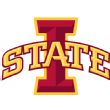
2018 record and rankings: 8-5 (No. 38 in S&P+, No. 38 in FPI)
2019 S&P+ projection: 6.6 wins (No. 43)
2019 FPI projection: 7.9 wins (No. 26)
Follow college football long enough, and you end up with a pretty rigid set of (mostly accurate) assumptions. Certain schools will be known for offense, others for defense. Certain programs will become regular jumping-off points for up-and-coming coaches and innovators, some will lean more conservative, and at the end of the day, only certain schools will be allowed to win long term.
These baked-in assumptions make concepts such as "Iowa State, bastion of defensive creativity and innovation" pretty hard to grasp. But here we are.
In just three seasons, head coach Matt Campbell, one of the most intriguing branches on the bountiful Mount Union coaching tree, has turned Iowa State into one of the most fascinating teams in the FBS.
It started on defense. Coordinator Jon Heacock -- former Youngstown State head coach and Kent State and Toledo defensive coordinator -- followed Campbell to Ames in 2016, and at ISU he's been given free rein to get weird.
And during an early-2017 identity crisis, he found something that worked, landing on a three-man, odd-front attack -- a 3-3-3 of sorts. It changed things almost instantly. The Cyclones allowed just 18.5 points per game over their final 11 games, then allowed just 20.4 per game in 2018 until late-season depth issues broke things down a bit.
Another midseason change might have altered the offense's trajectory as well.
ISU averaged only 17.5 points per game during a 1-3 start last season, so Campbell handed the offense over to freshman quarterback Brock Purdy. Sudden youth movement with an eye toward future seasons? Nope! ISU averaged 30.9 points per game from that point forward, as Purdy completed 66% of his passes with a 169.9 passer rating.
Suddenly the offense wasn't quite as reliant on a dreadfully inefficient run game. Purdy found high levels of efficiency passing to Hakeem Butler and slot receivers Deshaunte Jones and Tarique Martin.
Losing Butler might end up hurting more than losing star running back David Montgomery. Montgomery was one of the best tackle-breakers in the country, and as such he was picked in the third round of the 2019 NFL draft, but ISU ranked just 83rd in rushing marginal efficiency. The Cyclones got the majority of their good production from the passing game, and Butler (22 yards per catch, 12.2 yards per target) was incredibly dangerous.
Montgomery and Butler are about all ISU loses, though. Purdy is back, as are six offensive linemen who have combined for 114 career starts. On defense, last year's top five linemen, four of five linebackers and seven of 10 DBs are all back. If some combination of Jones, Milton, Arkansas transfer La'Michael Pettway, junior Landen Akers and some exciting redshirt freshmen can raise their respective games, the offense could remain dangerous despite having nothing proven at running back.
Defensively, the primary issue is depth. Only two of the top 10 tacklers in the secondary played in all 13 games, and the effect was obvious. Through eight games, ISU was allowing a 58% completion rate and a 122.8 passer rating. Last five games: 70% and 151.6, respectively. There's more experience in the back now, and the pass rush could again be dangerous with the return of defensive end JaQuan Bailey, but it goes without saying that keeping your desired lineup on the field makes a huge difference.
If we have learned anything, though, it's that Campbell, Heacock and offensive coordinator Tom Manning aren't scared of making risky and creative choices with their personnel if they need to. And despite some question marks on offense and the aforementioned depth issues on D, FPI has given Iowa State the third-best odds of winning the Big 12 this year. If you're struggling to grasp "Iowa State, bastion of defensive creativity," then just wait until you maybe have to deal with "Iowa State, Big 12 title game participant."
Texas Tech Red Raiders
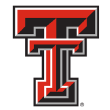
2018 record and rankings: 5-7 (No. 37 S&P+, No. 34 FPI)
2019 S&P+ projection: 6.3 wins (No. 55)
2019 FPI projection: 6.6 wins (No. 45)
Kliff Kingsbury's and Matt Wells' most recent head-coaching tenures saw a lot of striking parallels.
Each took over as head coach of his respective alma mater (where each had quarterbacked) in 2013.
They both enjoyed immediate success. Kingsbury won his first seven games on the way to a first-year Holiday Bowl win, and Wells went 19-9 with two bowl wins and a division title in his first two.
Both dealt with downturns. After his 7-0 start, Kingsbury lost 13 of his next 18 games, then rounded into .500 form. Wells went from 10-4 in 2014 to 15-23 from 2015 to '17. Kingsbury's defense consistently tripped him up despite prolific offense, while Wells' offense was Utah State's primary culprit.
Another problem: close games. From 2013 to 2017, Wells was 5-15 in games decided by one possession and Kingsbury was 9-12.
Both got a sixth year in charge despite diminishing returns, and, with dynamic young QBs behind center, both improved on paper. With freshman Alan Bowman, Kingsbury's Red Raiders jumped from 52nd in S&P+ in 2017 to as high as 25th during a 5-2 start. And with sophomore Jordan Love, Wells' Aggies jumped from 83rd in 2017 to as high as 21st.
The parallels stop there because Bowman got hurt -- OK, he didn't just get hurt, he suffered a recurring collapsed lung -- and Love did not. USU narrowly fell at Michigan State and Boise State but rolled to 11-2. Texas Tech lost a pair of tight games to Iowa State and Oklahoma, then lost Bowman for the season. The Red Raiders still nearly beat Texas but fell flat in the last two games and finished 5-7.
At the end of 2018, Kingsbury got fired and Wells got promoted. Fickle business, this.
(Don't feel too bad for Kingsbury, of course. His firing resulted in him ... getting a promotion. He's now an NFL head coach and can draft good defensive players instead of having to recruit them. He also got to draft long-coveted Kyler Murray after coming up short in recruiting him.)
Wells turned things around with Love and an old Big 12 offensive coordinator in former Missouri playcaller David Yost. After five straight years of ranking between 90th and 100th in offensive S&P+, USU leaped to 22nd, and Yost followed Wells to Lubbock.
Yost should have fun with what he inherits. In parts of just eight games, Bowman completed 69% of his passes and threw for 2,638 yards. Despite losing leading receivers Antoine Wesley and Ja'Deion High, Tech still returns seniors RJ Turner and Seth Collins, junior T.J. Vasher and sophomore KeSean Carter in the receiving corps, and Wells added a Mountain West stud in Nevada transfer McLane Mannix.
The line features six guys with a combined 116 career starts (including all-conference guard Jack Anderson), and the run game could have a miniature thunder-and-lightning component with efficient sophomore Ta'Zhawn Henry (5-7, 170) and senior Utah transfer Armand Shyne (5-11, 210).
Defense was never the problem for Wells at USU, but it took a definitive step forward when he brought veteran coordinator Keith Patterson aboard in 2018. The Aggies jumped from 67th in defensive S&P+ to 35th, due primarily to a hyperactive secondary.
Patterson has lots of success and failure on his résumé, which includes coordinator or co-coordinator stints at Tulsa, Pitt, WVU, and Arizona State. His first Tech defense will feature a mix of decent veterans (tackle Broderick Washington Jr., linebacker Jordyn Brooks, corner Damarcus Fields), returnees from injury (end Quentin Yontz, corners Octavious Morgan and Jaylon Lane), and pieces from the discard pile (Cal linebacker Evan Rambo, Penn State corner Zech McPhearson).
The corners have some aggressiveness potential, but the top three safeties are gone, so that aggressiveness could come with a price. But at least the bar is low -- Wells' worst USU defense was better than anything Tech produced in the past five years.
Kansas State Wildcats

2018 record and rankings: 5-7 (No. 78 S&P+, No. 62 FPI)
2019 S&P+ projection: 5.6 wins (No. 64)
2019 FPI projection: 5.3 wins (No. 57)
Chris Klieman is pretty good at succeeding a legend. The 51-year old Northern Iowa grad came to North Dakota State in 2011 and became Craig Bohl's defensive coordinator the next year. During this period, the Bison went 43-2 and won their first, second and third FCS national titles. For good measure, they also beat FBS' Minnesota, Colorado State and, yes, Kansas State.
When Bohl left for Wyoming, Klieman faced an almost impossible task: How in the world do you stand out when there's no way to top what your predecessor did? He came as close as possible. NDSU beat Iowa State in 2014 and a ranked Iowa in 2016. Oh yeah, and the Bison went 69-6 and won four more national titles. Maybe he didn't raise the standards in Fargo, but he definitely met them.
By comparison, his next task might be downright easy. After all, all he's got to do now is succeed the only modern football coach to win at Kansas State.
No seriously, the only one.
Win percentage as Kansas State head coach (1946-present): Bill Snyder (320 games, .656 win percentage), Ron Prince (37 games, .459), Vince Gibson (85 games, .388), Bill Meek (39 games, .372), Jim Dickey (80 games, .313)
Ron Prince succeeded Bill Snyder the first time he retired and went 17-20 in three years at Kansas State. That was, in its own way, a rousing success.
Snyder was responsible for almost literally everything good that has happened to the KSU football brand. Two Big 12 titles and nine bowl wins? All his. Twelve consensus All-Americans? Eleven were his. He took walk-ons and a random smattering of blue-chippers and crafted a team that was smart, controlled and guaranteed to make fewer mistakes than you.
After a while, though, those walk-on-made-good stories seemed to add up a bit. Per ESPN, the best signing class of his last five seasons ranked 57th. Transfers were adding up. Eventually, attrition took its toll.
After willing KSU to at least bowl eligibility for every year since his return to coaching, Snyder's 2018 team fell to 5-7. Eventually, the balance between winning with diamonds in the rough and cratering leaned more toward the latter. Even typically great close-game execution faltered -- the Wildcats went 2-4 in one-possession finishes, with wins over only Kansas and South Dakota. It was a good time for the legend to go.
One assumes that Klieman will know how to navigate within the every-little-detail-counts culture that Snyder created. That's basically what he oversaw in Fargo. Both of his coordinators boast extensive NDSU experience -- offensive coordinator Courtney Messingham was his OC at NDSU for 2017-18 (he was also Iowa State's OC for 2012-13), and defensive coordinator Scottie Hazelton was in the same role at NDSU before joining Bohl and completely turning around Wyoming's defense in 2017. They both know what's required of them and what it takes to build the culture Klieman wants to build.
Now we just have to wait and see how long it takes to turn KSU into NDSU South. Klieman won't have to undergo a total youth movement if he doesn't want to -- he's got veterans like junior quarterback Skylar Thompson, senior running backs James Gilbert and Jordon Brown (both transfers), senior receiver Dalton Schoen, three multiyear starters on the offensive line, and a defense that could start as many as nine or 10 juniors and seniors.
Still, the actual talent here is debatable. KSU ranked 78th in S&P+ last year -- the Wildcats weren't a particularly unlucky 5-7 -- and the best-case scenario is that youngsters begin to overtake upperclassmen as the 2019 season unfolds. But no matter how 2019 unfolds, the long-term prognosis involved with this hire makes a whole lot of sense.
Kansas Jayhawks

2018 record and rankings: 3-9 (No. 100 S&P+, No. 80 FPI)
2019 S&P+ projection: 2.6 wins (No. 107)
2019 FPI projection: 2.8 wins (No. 108)
Once upon a time, Les Miles was an amazing underdog coach. His drastically outmanned turn-of-the-century Oklahoma State teams upset rival Oklahoma twice in a row (2001 and 2002), and, during his heyday at LSU, his teams found themselves when doubted: the Tigers went 8-4-1 against the spread, with six outright wins, as an underdog from late 2008 through 2012. Putting Miles in a Kansas hat and asking him to go do wild, improbable things feels, in some way, right. The Mad Hatter going fully mad again.
Of course, there were times when Miles' teams played much worse as an underdog, too. His last seven games as such at LSU, for instance, produced seven losses by an average of 18 points. By the end of his time in Baton Rouge, he was a coach with a game plan that worked when he had the talent advantage and didn't when he didn't.
He's not going to have many talent advantages in Lawrence. S&P+ projects that Kansas will win 2.6 games in Miles' first season. FPI more optimistically projects 2.8.
Unlike another retread hire of sorts -- new UNC coach Mack Brown, who brought in a tempo-and-space offensive coordinator (Phil Long) and one of college football's more creative defensive coordinators (Jay Bateman) in an attempt to prove he has figured out how to stay with the times -- Miles appears to be building a program with what he knows. He has handed the reins of his offense to Les Koenning, an experienced former OC at, most recently, Texas A&M, South Alabama, Mississippi State and UAB.
Koenning was decent if frustrating at A&M and MSU but left no positive impact at the smaller, more underdog schools. He generally attempts to establish the type of physical identity that Miles himself prefers, and that could make some semblance of sense with Pooka Williams back. The sophomore running back, and one of the few blue-chip signings of the David Beaty era, exploded for 1,414 combined rushing and receiving yards last year and proved semi-durable despite his 5-10, 170-pound stature. Williams was accused of domestic battery last winter, signed a diversion agreement to avoid conviction, and eventually received a mere one-game suspension.
With Williams, reasonably capable veteran backups in Khalil Herbert and Dom Williams, and a large, experienced line led by all-conference tackle Hakeem Adeniji, Koenning might be able to establish the run well enough that it bleeds clock and frustrates opponents in the Big 12, a more pass-happy league.
At some point, though, the Jayhawks will have to pass too, and that's not likely to go well. Only one of last year's top four receivers returns, and the QB position is as unproven as ever. It appears juco transfer Thomas MacVittie is the most likely starter, and while he did average 6.2 yards per carry at Mesa CC last fall, he also completed just 54% of his passes and had a 126.8 passer rating.
New defensive coordinator D.J. Eliot has quite a few years of power conference DC experience on his résumé but not a lot of success. Per S&P+, he has yet to field a top-50 defense, and that streak probably won't end in 2019. In fact, generating top-100 production will be an accomplishment.
Eliot inherits a blank slate in the front six/seven, where only two returnees -- rush end Azur Kamara and linebacker Kyron Johnson -- made more than six tackles last year. Both have disruptive potential, but the two-deep is going to be awfully reliant on either newcomers or unproven veterans.
There's hope in the secondary, at least as far as experience is concerned. Kansas' 2018 pass defense was awful, but safeties Bryce Torneden and Mike Lee and corners Corione Harris and Hasan Defense have all shown flashes of playmaking ability. This is faint praise, but it's the best I can do.
